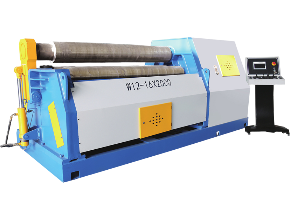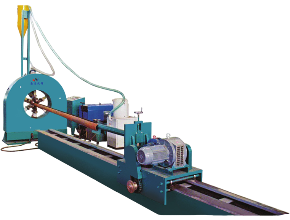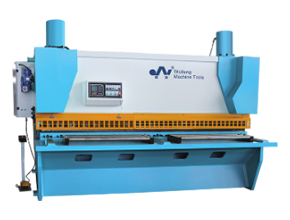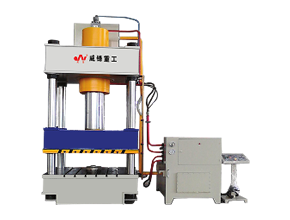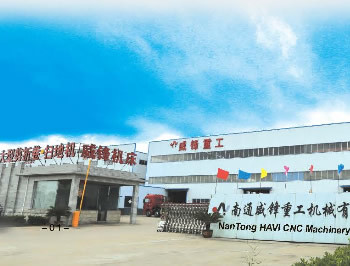Unlocking Precision: The Advantages of Hydraulic Press Brake Machines for Manufacturing
Release Time:
2025-08-13
Unlocking Precision: The Advantages of Hydraulic Press Brake Machines
Manufacturing is the backbone of many industries, and the tools we use can significantly influence the quality and efficiency of our work. Among the most essential machines in the manufacturing sector are hydraulic press brake machines. These machines have transformed the landscape of metal fabrication, offering unparalleled precision and versatility. In this article, we will explore the numerous advantages of hydraulic press brake machines and why they are an indispensable asset in modern manufacturing.
Table of Contents
- 1. What is a Hydraulic Press Brake Machine?
- 2. How Hydraulic Press Brake Machines Work
- 3. Advantages of Hydraulic Press Brake Machines
- 4. Applications of Hydraulic Press Brake Machines
- 5. Maintenance of Hydraulic Press Brake Machines
- 6. Choosing the Right Hydraulic Press Brake Machine
- 7. The Future of Hydraulic Press Brake Technology
- 8. Conclusion
- 9. Frequently Asked Questions (FAQs)
1. What is a Hydraulic Press Brake Machine?
A hydraulic press brake machine is a piece of equipment used to bend and shape sheet metal into various forms. Utilizing hydraulic systems to exert force, these machines can provide high levels of precision and control over the bending process. The hydraulic mechanism allows for the application of significant pressure, making it possible to easily manipulate materials that may be too difficult for mechanical machines.
Hydraulic press brakes come in varying sizes and configurations, catering to a wide range of manufacturing needs. Their ability to handle thick materials, complex shapes, and high volume production makes them a popular choice in industries such as automotive, aerospace, and construction.
2. How Hydraulic Press Brake Machines Work
At the heart of a hydraulic press brake machine is its hydraulic system, which operates based on Pascal's principle. This principle states that when pressure is applied to a confined fluid, the pressure is transmitted uniformly in all directions. In practice, this means that even a small input force can generate a much larger output force.
When a piece of sheet metal is placed between the upper and lower dies of the machine, the hydraulic system activates, pushing the ram downward. This motion bends the metal into the desired shape as the operator sets the angle and depth of the bend using computerized controls or manual adjustments.
**Key Components of Hydraulic Press Brake Machines:**
- **Hydraulic Cylinder:** Converts fluid pressure into linear force.
- **Ram:** The component that moves downward to bend the metal.
- **Dies:** Upper and lower molds that shape the metal.
- **Control System:** Allows for precision adjustments and automation of the bending process.
3. Advantages of Hydraulic Press Brake Machines
The benefits of hydraulic press brake machines are manifold. Below are some of the most significant advantages that set them apart from other bending machines.
3.1 Precision and Accuracy
One of the standout features of hydraulic press brake machines is their ability to provide high-precision bends and cuts. The hydraulic system allows for fine adjustments, ensuring that each bend is consistent and meets stringent quality standards. This level of accuracy reduces material waste and enhances the overall quality of the final product.
3.2 Versatility in Applications
Hydraulic press brakes are incredibly versatile. They can be used for various applications, including bending, flanging, and punching. This versatility makes them suitable for different industries, from automotive to artistic metalworking. Operators can easily switch between different processes and adjust the machine to accommodate diverse materials and thicknesses.
3.3 Increased Productivity
Efficiency is crucial in manufacturing, and hydraulic press brake machines are designed to maximize productivity. Their fast operation and ability to handle multiple bends in a single setup reduce downtime and increase output. The speed at which operators can set up and execute complex bends contributes to significant gains in productivity.
3.4 Energy Efficiency
Modern hydraulic press brake machines are engineered to be energy-efficient. They are designed to minimize energy consumption while maintaining peak performance. Many models incorporate advanced hydraulic systems that reduce energy loss, leading to lower operational costs and a smaller carbon footprint.
3.5 Ease of Operation
Operating hydraulic press brake machines is relatively straightforward, thanks to user-friendly control systems. Many machines come equipped with digital displays, allowing operators to make precise adjustments easily. Additionally, training for new operators is often less intensive compared to other types of machines, enabling companies to onboard new staff quickly.
4. Applications of Hydraulic Press Brake Machines
Hydraulic press brake machines find applications in a wide array of industries due to their adaptability and efficiency. Here are some notable uses:
- **Automotive Industry:** Used for creating parts such as frames, brackets, and body panels.
- **Aerospace Industry:** Essential for producing components that require high strength-to-weight ratios.
- **Construction Industry:** Fabricating structural steel parts and custom metalwork for buildings.
- **Consumer Goods:** Creating intricate metal designs for appliances and furniture.
5. Maintenance of Hydraulic Press Brake Machines
To ensure optimal performance and longevity of hydraulic press brake machines, regular maintenance is essential. Here are some key maintenance tips:
- **Regular Inspections:** Periodically check hydraulic fluid levels, hoses, and seals for any signs of wear or leaks.
- **Cleaning:** Keep the machine clean from metal shavings and debris to prevent contamination of hydraulic fluids.
- **Lubrication:** Ensure that all moving parts are properly lubricated to minimize wear and tear.
- **Calibration:** Regularly calibrate the machine to maintain accuracy and precision in bending.
6. Choosing the Right Hydraulic Press Brake Machine
When selecting a hydraulic press brake machine, several factors should be considered:
- **Material Type and Thickness:** Ensure the machine can handle the materials you frequently work with.
- **Bending Length:** Choose a machine with an appropriate bending length for your projects.
- **Control System:** Opt for a machine that offers the level of automation and control that suits your operational needs.
- **Budget:** Consider both the initial investment and long-term operational costs, including maintenance and energy consumption.
7. The Future of Hydraulic Press Brake Technology
As technology evolves, so does the design and functionality of hydraulic press brake machines. The future holds exciting possibilities, including:
- **Automation:** Increased automation features will streamline operations and reduce labor costs.
- **Smart Technologies:** Integration of IoT capabilities for real-time monitoring and predictive maintenance.
- **Advanced Materials:** Development of machines capable of working with new, innovative materials.
8. Conclusion
Hydraulic press brake machines have become indispensable in the manufacturing sector due to their precision, versatility, and efficiency. As industries continue to evolve, these machines will play a crucial role in ensuring high-quality production and meeting the demands of modern manufacturing. Investing in a hydraulic press brake can unlock significant advantages and drive your business forward.
9. Frequently Asked Questions (FAQs)
1. What materials can hydraulic press brake machines work with?
Hydraulic press brake machines can work with a variety of metals, including steel, aluminum, brass, and copper, accommodating different thicknesses based on the machine's specifications.
2. How do I ensure the precision of my hydraulic press brake machine?
Regular calibration and maintenance, along with using high-quality tools and materials, can help maintain the precision of your hydraulic press brake machine.
3. What is the typical lifespan of a hydraulic press brake machine?
With proper maintenance and care, hydraulic press brake machines can last anywhere from 10 to 20 years, depending on usage and maintenance practices.
4. Are hydraulic press brake machines energy efficient?
Yes, modern hydraulic press brake machines are designed to be energy-efficient, minimizing energy consumption while maximizing performance.
5. Can hydraulic press brake machines be automated?
Yes, many hydraulic press brake machines offer automation features, allowing for enhanced productivity and ease of operation in manufacturing environments.
By understanding and leveraging the advantages of hydraulic press brake machines, manufacturers can enhance their production processes, ensuring high-quality outputs while meeting the demands of their respective industries.
Previous Page:
Related News


